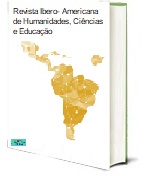EPIDEMIOLOGICAL ANALYS IS OF DIVERTICULAR DISEASE IN THESOU THE ASTERNREGION COMPARED TO BRAZIL IN THE LAST 11 YEARS
DOI:
https://doi.org/10.51891/rease.v8i7.6397Keywords:
Diverticular Disease. Diverticulitis. Epidemiology.Abstract
Diverticular disease is the presence of saculations mainly in the large intestine; predominantly affects the elderly population and can cause complications such as inflammation, perforation, fistulas, lower gastrointestinal bleeding, even requiring urgent surgical intervention. The objective was to analyze its occurrence in Brazil, with emphasis on the most affected area, which is the Southeast, between the years 2010 and 2020. A retrospective and descriptive study was carried out using information found in DATASUS, between January 2010 and September 2020, containing information such as hospitalizations, number of deaths, mortality rate, total cost value, average hospital stay and age group. Brazil recorded a total of 84,971 hospitalizations, highlighting the Southeast with 50,528 hospitalizations, followed by the South with 18,471, Northeast 9,103, Midwest with 4,748 and North with 2,121 hospitalizations. The age group most affected was 80 years or more with 196,488 hospitalized. The average hospital stay was 6.4 days, the number of deaths was 3379, the mortality rate was 5.86 and the total amount spent was R $ 80,698,098.29. Diverticular disease has a higher incidence among those over 60 and tends to increase due to increasing life expectancy and the worsening of eating habits, especially in industrialized regions. Even though it is a disease in which the majority has few symptoms, it is necessary to make the population aware of the importance of a diet rich in fiber to avoid constipation, in order to prevent future complications and recurrences.
Downloads
Downloads
Published
How to Cite
Issue
Section
Categories
License
Atribuição CC BY

